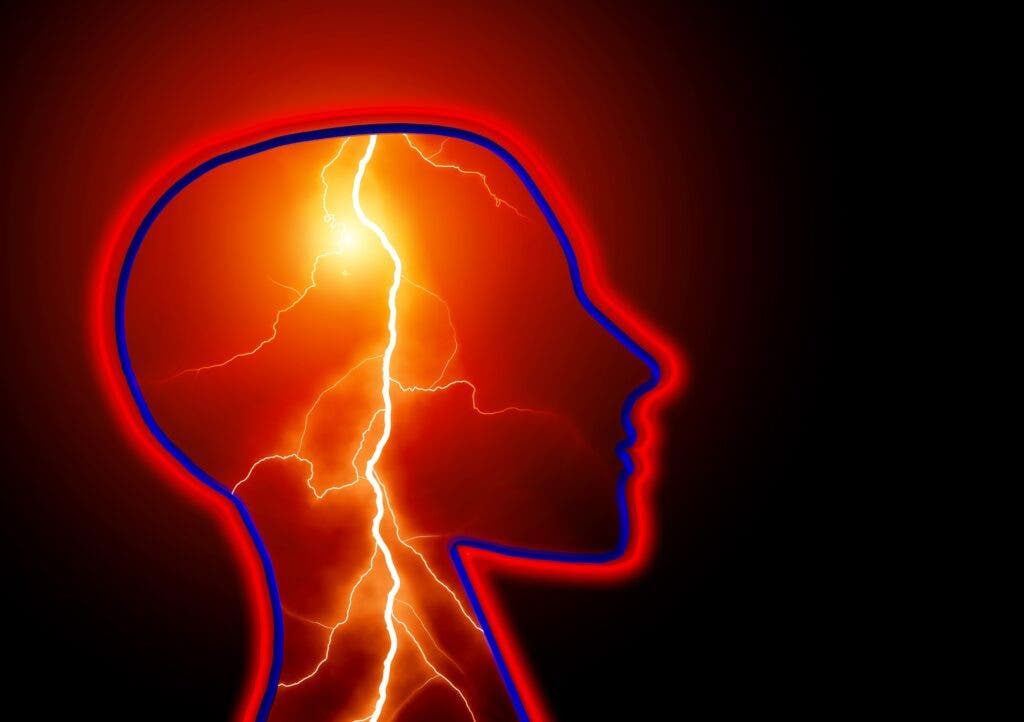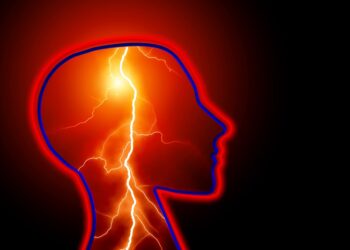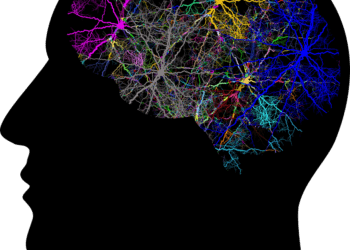
Epilepsy is a brain disease that involves recurrent episodes of involuntary movements known as seizures. Seizures may involve a part of the body or the entire body, and are sometimes accompanied by loss of consciousness, as well as loss of bowel or bladder control.
Epilepsy affects people of all ages. An estimated 50 million people worldwide have epilepsy, making it one of the most common neurological diseases.
What causes epileptic seizures?
Seizures are the hallmark of epilepsy. However, you need to experience at least two unprovoked seizures to be diagnosed with epilepsy. A single seizure does not signify epilepsy. In fact, up to 1 in 10 people worldwide will have a seizure during their lifetime.
Epileptic seizures are caused by abnormal brain activity, specifically surges of electricity in the brain. Most seizures happen suddenly without warning, last a short time (a few seconds or minutes) and stop by themselves.
During a seizure, a large number of nerve cells in the brain fire excessively and in synchrony, and this hyperactivity may lead to uncontrollable shaking of the body and periods of loss of consciousness. Imagine a thunderstorm causing the outage of an electrical network, temporarily disrupting connections, likewise electrical activity in brain cells can be prevented from working normally.
Seizure symptoms can vary greatly since abnormal brain activity can affect coordination. Some epilepsy patients simply stare blankly for a few seconds during their seizure, while others repeatedly twitch their arms or legs.
A mild seizure may be difficult to recognize. It can last a few seconds during which you lack awareness, whereas a strong seizure can last several minutes.
The most common epilepsy symptoms may include:
- Temporary confusion
- A staring spell
- Uncontrollable jerking movements of the arms and legs
- Loss of consciousness or awareness
- Psychic symptoms such as fear, anxiety or deja vu
Many people with epilepsy have more than one type of seizure and may even have symptoms of other neurological disorders. For the most part, an epilepsy patient will tend to have the same kind of seizures each time, meaning the symptoms should be similar from episode to episode.
What causes epilepsy?
Epilepsy is a complex neurological condition that can be triggered by a number of different underlying causes, leading to different types of seizures.
A person might start having seizures due to:
- A genetic inheritance from one or both parents. If you have a family history of epilepsy, you may be at risk of developing a seizure disorder.
- A structural change in the brain due to either poor brain development because of a childhood disease or damage to the brain. Head injuries, infections like meningitis, a stroke, or a tumor can also cause epilepsy in some people.
- Structural changes caused by genetic conditions such as tuberous sclerosis, or neurofibromatosis, which tend to cause growths affecting the brain and nervous system.
- Dementia, which can increase the risk of epilepsy in older adults.
Types of seizures
There are over 40 different types of seizures, each with its different symptoms and patterns.
In order to diagnose a person’s type of epilepsy, a doctor will typically perform an electroencephalogram (EEG) or magnetic resonance imaging (MRI) test to look for certain patterns in the recorded brain waves.
Doctors classify epilepsy as:
- Generalized epilepsy
- Focal epilepsy
- Unknown if generalized or focal epilepsy
Generalized epilepsy
Generalized epilepsy involves seizures that affect all areas of the brain. There are six subtypes of generalized seizures.
- Absence seizures. Previously known as petit mal seizures, these often occur in children and are characterized by staring into space or subtle body movements such as eye blinking or lip-smacking. These seizures may occur in clusters and cause a brief loss of awareness.
- Tonic seizures. These seizures cause stiffening in the muscles and may cause a person to fall to the ground.
- Atonic seizures. Also known as drop seizures, cause a loss of muscle control, which may cause you to suddenly collapse or fall down.
- Clonic seizures. Clonic seizures are associated with repeated or rhythmic, jerking muscle movements. These seizures usually affect the neck, face, and arms.
- Myoclonic seizures. Myoclonic seizures are characterized by sudden brief jerks or twitches of the arms and legs.
- Tonic-clonic seizures. Previously known as grand mal seizures, these are the most dramatic type of epileptic seizure because they can cause an abrupt loss of consciousness, body stiffening and shaking, and sometimes loss of bladder control or biting your tongue.
Focal epilepsy
Seizures that result from abnormal activity in a single area of the brain are called focal seizures. These fall into two subcategories:
- Focal seizures without loss of consciousness. Previously known as simple partial seizures, these seizures don’t cause a loss of consciousness. They may result in involuntary jerking of a body part, such as the arm or leg, as well as spontaneous sensory symptoms such as dizziness or tingling.
- Focal seizures with impaired awareness. Previously known as complex partial seizures, these seizures involve a change or loss of consciousness or awareness. Patients affected by this type of focal seizure may stare into space and not respond normally to the environment or perform repetitive movements, such as walking in circles or hand rubbing.
How are seizures triggered?
Some patients find that certain factors may trigger a seizure. These include:
- Missing medication. Some people with epilepsy are so sensitive that missing a dose of their antiepileptic medication can dramatically increase their risk of having seizures. The longer the break between doses, the greater the chance of having a seizure.
- Stress. High stress may lower the seizure threshold and trigger seizures. This is why it’s important to recognize signs of harmful levels of stress early in order to manage it.
- Lack of sleep. This is one of the most common triggers of seizures.
- Alcohol. For most people with epilepsy, moderate alcohol intake (no more than two standard drinks in a day) should be fine. However, some are very sensitive to even small amounts of alcohol. Alcohol also reduces the effectiveness of the antiepileptic medication, making seizures more likely.
- Certain drugs and supplements. Like alcohol, some sedative and hypnotic drugs, such as sleeping pills and certain illegal drugs, can trigger seizures when combined with antiepileptic medication. This is why it’s very important that you always share with your doctor all the substances that you use on a regular basis.
- Diet. What food or drink you consume can have a profound effect on the incidence of seizures. Caffeine, for instance, can trigger seizures. Others become sensitive to seizures when they miss meals and have a low blood sugar level.
- Photosensitivity. Footage with flickering strobe lights is often accompanied by a warning advising against viewing for those with epilepsy. However, photosensitive epilepsy is quite rare, affecting only a small fraction of those suffering from epilepsy.
- Menstruation. Some women with epilepsy find that their seizures happen just before or during their menstrual period. This may be due to a combination of changes in hormonal levels, fluid retention, and the amount of antiepileptic medications in the blood.
Since each person can have their seizures induced by different factors, doctors recommend keeping a seizure diary. The diary should include:
- Date and time of seizures
- If you were asleep or awake
- Description or type of seizure
- What happened before, during and after the seizure, if known
- Medication taken or missed that day, including medication for other conditions
- Any possible seizure triggers
- General health and energy level leading up to the seizures
- Menstrual cycle for women
Treatments
It’s believed that up to 70% of people with epilepsy can live seizure-free if properly diagnosed and treated with the right medication. However, out of the 50 million people worldwide who suffer from this brain disorder, three-quarters live in low-income countries where they do not get the treatment they need.
While about two-thirds of patients respond to anti-epileptic medication, the remainder is resistant to current medical treatment. But new research may also address this group of patients that are drug-resistant.
Anti-epileptic drugs target nerve cells, but researchers in Germany and Japan went a different route. Rather than neurons, they devised a new drug that targets a class of glial cells known as astrocytes.
Astrocytes control the local environment and are responsible for the ion balance in the brain, but also play an important role in signal transmission between neurons. In a study published in early 2021, the researchers led by Dr. Christine Rose from Heinrich-Heine University Duesseldorf found that epileptic discharges lead to a rise in the pH of astrocytes.
In experiments, researchers also found that drugs that suppress changes in astrocytic pH caused mice to suffer less severely from epileptic hyperexcitability than untreated animals.
“This observation is very intriguing. But it still needs to be established whether or not it can be transferred to humans. And it will take a very long time before any potential drug can be developed and be really used in the clinics,” Rose said.
In the future, treatments such as these and better coverage of existing antiepileptic medication may provide a seizure-free life to all epilepsy patients.






